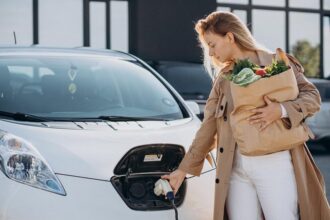A new round of tariff hikes from President Donald Trump’s administration has reignited trade tensions between the world’s two largest economies.
“History will record that the actions President Trump has taken in recent days were the beginning of saving the West from complete economic domination by another power,” White House Deputy Chief of Staff Stephen Miller said in an April 13 interview on Fox News, referring to China’s growing influence over global supply chains.
He described the latest tariff policy as “a turning point in U.S.-China relations.”
Don’t Miss:
The new tariff plan began with a 10% baseline on foreign imports, announced earlier this month by the White House.
It was followed by steep reciprocal tariffs that brought the total levies on Chinese imports to 145%, combining the original 20% duties and an added 125% retaliatory hike. China responded with tariffs of its own, hitting U.S. goods with 125% duties.
The standoff amounts to a mutual trade embargo impacting nearly $600 billion in annual trade. The effects are already filtering down to American households.
Baby strollers, car seats, and other child-related goods—many of which are produced in China—are getting pricier and scarcer. According to the Associated Press, Munchkin CEO Steven Dunn warned that domestic manufacturers lack the skilled labor, automation, and tooling expertise needed to replace imports—raising fears of potential product shortages.
Trending: How do billionaires pay less in income tax than you? Tax deferring is their number one strategy.
Small retailers are feeling the pressure, too. Business Insider reported Alter Ego Comics in Lima, Ohio, is facing supplier price increases of up to 34%. Store owner Marc Bowker said his business is struggling to keep margins stable, and that passing the costs on to customers may not be enough to cover the rising expenses.
China has responded by seeking out alternative markets. Euronews reported on April 19 that trade fairs like the Canton Fair and China International Consumer Products Expo are key platforms, with many exporters exploring markets in Europe and investing in overseas production facilities to strengthen their global presence. This strategy aims to diversify their supply chains and improve resilience in the face of trade uncertainties.








